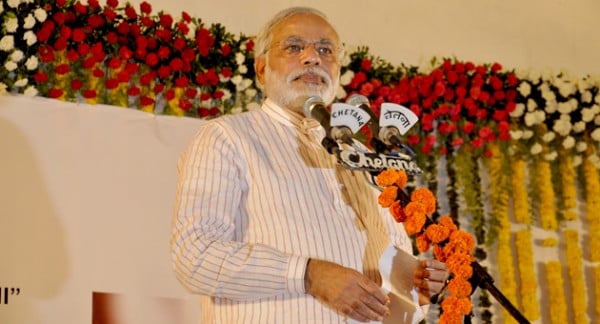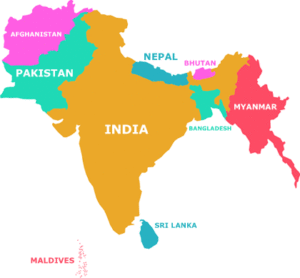
Photo Credit: Global Panorama via Flickr
Self-inflicted wounds – which come in the form of poor domestic governance, decrepit infrastructure, a hostile business climate, and the absence of a unified national market – continue to hobble India’s ambitions in Asia and on the larger world stage. Prime Minister Narendra Modi’s forthcoming budget offers a good chance to make some progress here. But New Delhi is also held back by its tumultuous neighborhood and, as recent events demonstrate, the prospects for headway on this front are far less promising. This, in turn, creates a striking paradox: India yearns for a place in the first ranks of world power – Modi has proclaimed that he wants “to make the 21st century India’s century” – and yet it remains unable to purposefully shape events in its immediate environs.
The most prominent case in point is the long-running India-Pakistan rivalry, which saps precious Indian resources — including the armed forces — and diverts the energy of those leaders who prefer to look to bigger arenas. As a consequence, India has missed out on the important economic gains that would accrue if normal trade ties were allowed to take hold between South Asia’s largest economies. According to a slew of recent studies (good examples here, here and here), a more liberalized trade regime would increase bilateral exchange as much as 20 times above current figures, along with boosting general prosperity in both countries. A 2012 report by the Confederation of Indian Industries, for instance, found that cross-border trade could easily quadruple in just a few years if both governments moved to increase economic linkages.
T he vexatious relationship between New Delhi and Islamabad also means that, despite the common civilizational and historical links permeating South Asia, India has been unable to integrate the region in the same way that China has economically stitched together the much more culturally diverse and geographically disperse East Asian area. Indeed, South Asian remains one of the world’s least integrated areas, with intraregional trade amounting to less than two percent of aggregate GDP compared to over 20 percent in East Asia. Likewise, Indian access to the markets and valuable energy resources in Central Asia are further blocked by Pakistan, creating a geopolitical and economic opening that China is quickly filling (here and here).
he vexatious relationship between New Delhi and Islamabad also means that, despite the common civilizational and historical links permeating South Asia, India has been unable to integrate the region in the same way that China has economically stitched together the much more culturally diverse and geographically disperse East Asian area. Indeed, South Asian remains one of the world’s least integrated areas, with intraregional trade amounting to less than two percent of aggregate GDP compared to over 20 percent in East Asia. Likewise, Indian access to the markets and valuable energy resources in Central Asia are further blocked by Pakistan, creating a geopolitical and economic opening that China is quickly filling (here and here).
As Islamabad’s obstructionism at a regional summit last November illustrates, New Delhi’s efforts at promoting cross-border economic cooperation via the South Asian Association for Regional Cooperation (SAARC) – a forum largely created by India – remain blocked. In fact, Beijing rather than New Delhi has a more powerful claim to being the engine of South Asian economic integration (see here and here).
In the face of Pakistani recalcitrance, Modi has signaled that he is willing to go outside the SAARC framework and cut bilateral arrangements with more cooperative neighbors. But this strategy is also problematic. For instance, New Delhi has ambitious plans to connect with Southeast Asia’s markets via major infrastructure corridors that run through Myanmar and Thailand. But much of these efforts are impeded by the rocky relationship with Bangladesh, which controls the most viable land routes eastward. The Indian prime minister is making a concerted attempt to build a better equation, but the current political instability in Dhaka (see here and here for background) makes that more difficult.
As a result, India is forced is to use its much neglected northeastern region, a geographic and economic cul de sac that is tenuously connected to the rest of the country, as a “gateway of Southeast Asia in future” as Modi put it a few months ago. Yet this initiative is likewise burdened by a concatenation of factors, including the lack of robust infrastructure linking the northeast with the rest of India as well as the rugged terrain and presence of ethnic insurgencies in both the northeast and Myanmar. Thus, ballyhooed connectivity projects like the Trilateral Highway and the Kaladan multimodal transit transportation project, initially slated for completion in 2013, have fallen drastically behind schedule. Despite Modi’s recent pledge, New Delhi has once again quietly pushed back the deadline for completing these projects to 2019, a clear indication according to a report this month that “despite tall claims it just cannot deliver on the ground.”
The failure to normalize Indian relations with Bangladesh, a country whose creation four decades ago was due almost entirely to New Delhi’s support, has also imposed significant domestic economic costs. The subcontinent’s partition in 1947 cut off West Bengal and the northeastern region from their traditional commercial links with what is now Bangladesh. Kolkata (formerly Calcutta) was once India’s leading city as well as the headquarters of the British East India Company, one of the mightiest agents for economic globalization in world history. Yet over the past six decades it has become a relative backwater not only in the global economy but also the Indian economy. As The Economist noted a few years back, “Kolkata evokes Havana, beautiful but shabby, the last city to remain largely untouched by India’s 20-year boom.”
Along the Himalayan frontier, political instability in Nepal has constrained long-standing joint plans to leverage that country’s vast hydropower potential to alleviate India’s acute energy security problems. Prime Minister Modi’s trip to Nepal last August kicked these plans into higher gear but renewed political turmoil there (here and here) have once again put them in limbo. The turbulence also opens the door to greater Chinese influence at India’s expense.
New Delhi will need to climb out of its South Asian box if it is to achieve global power status. But that’s much harder to do when the local environs keep hemming it in. The contrast with China – whose more stable neighbors desire vibrant economic engagement even if they are wary of its strategic intentions – is striking.
This commentary is cross-posted on Chanakya’s Notebook. I invite you to connect with me via Facebook and Twitter.